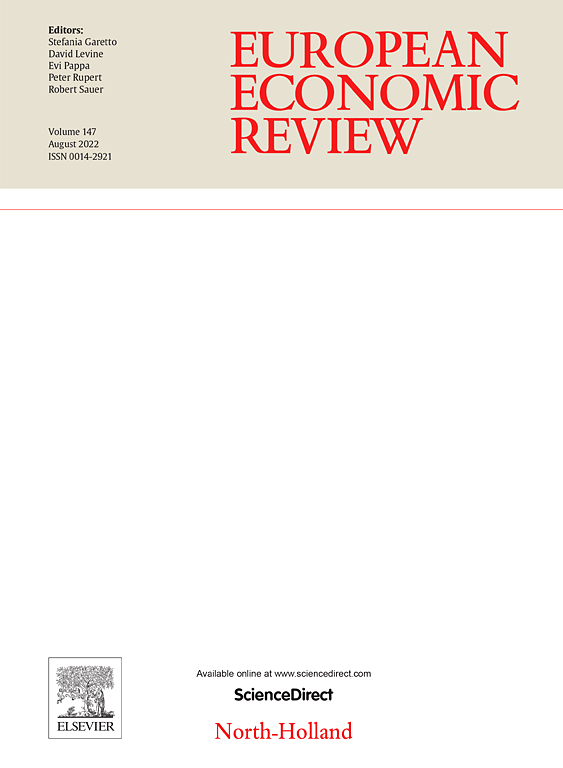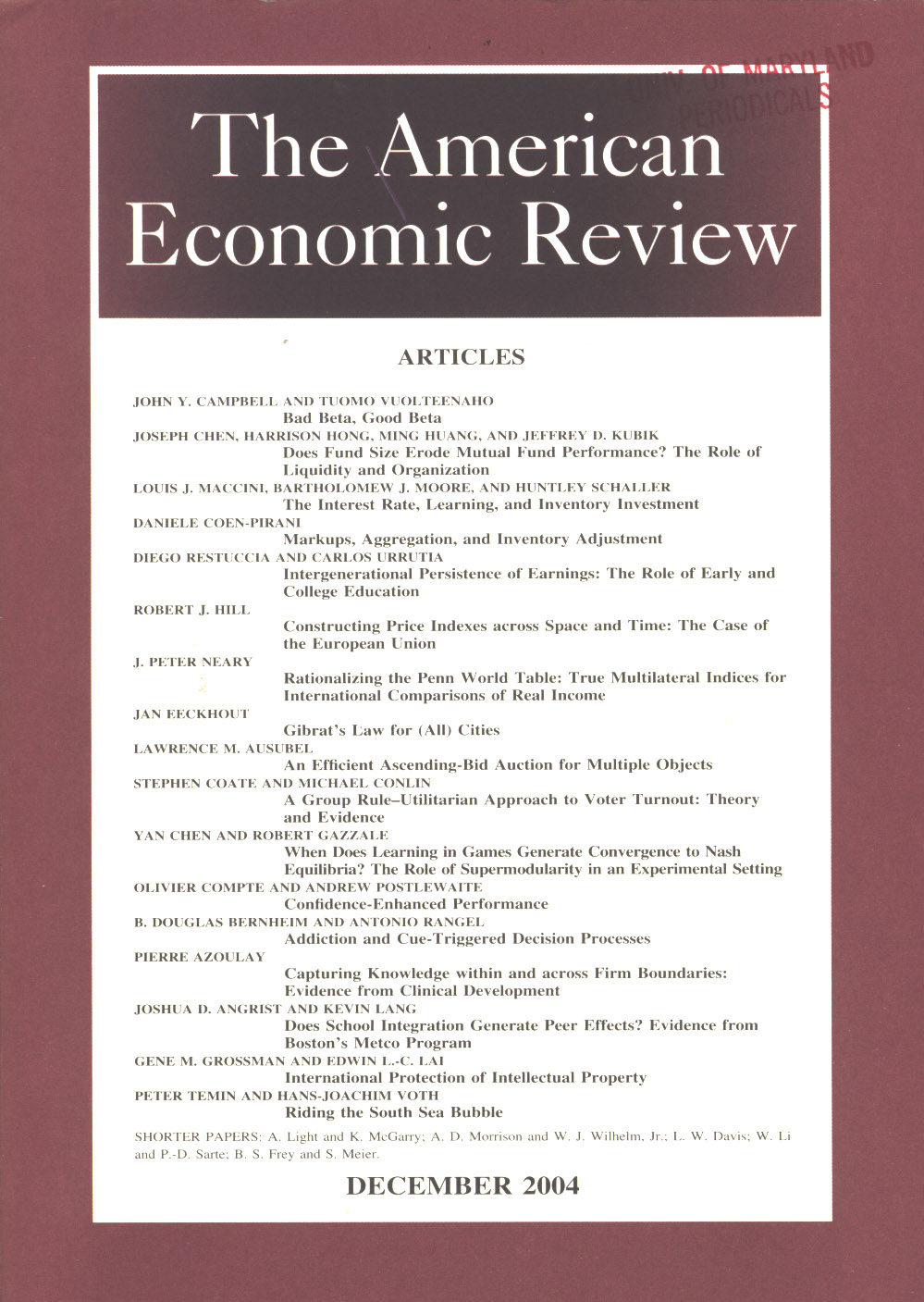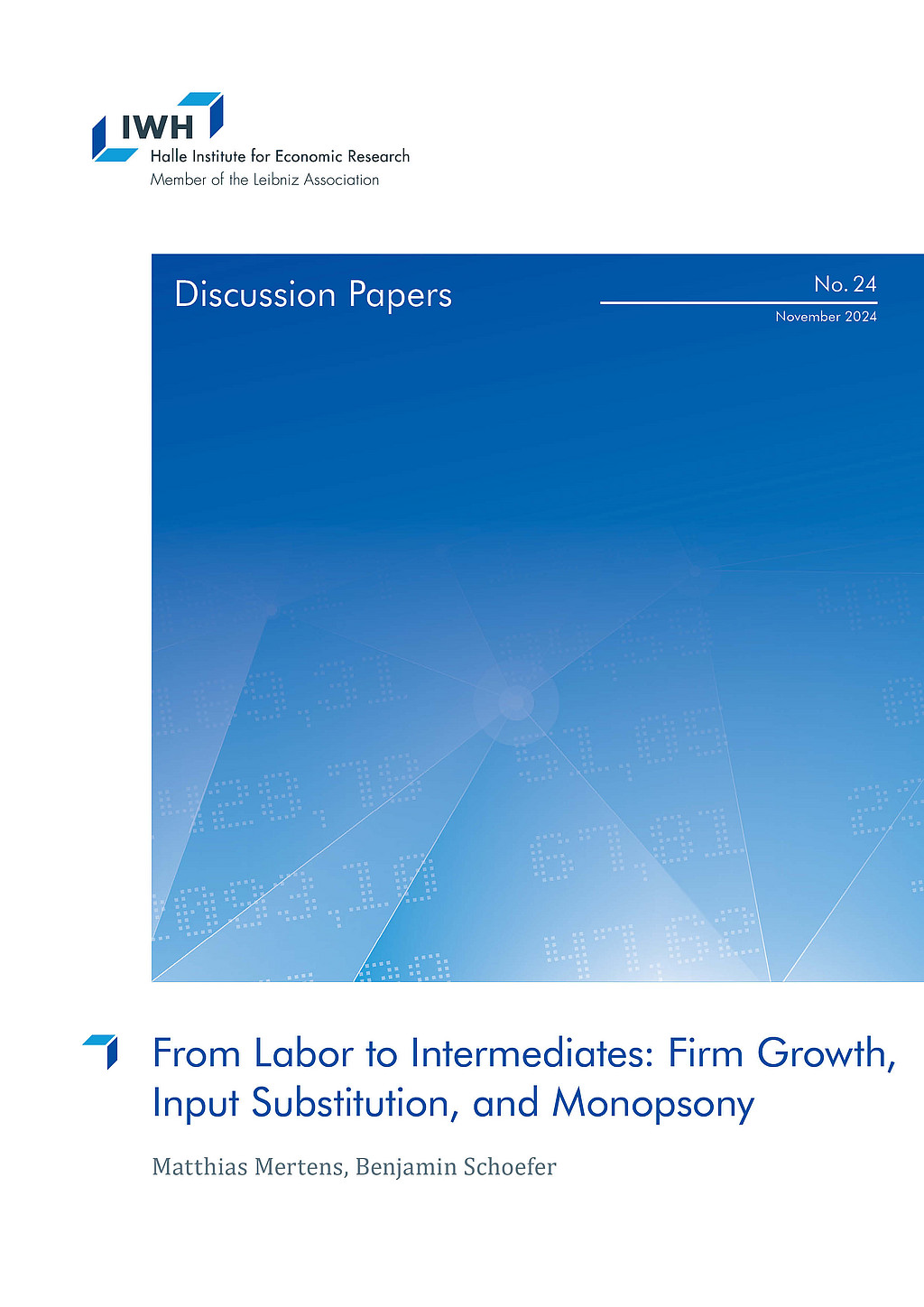Entrepreneurship, Innovation und Produktivitätswachstum
Diese Gruppe befasst sich mit Forschungsthemen, die für unser Verständnis von Innovationsmustern und Produktivitätswachstum von Bedeutung sind, und untersucht die Auswirkungen auf Arbeitnehmer und Unternehmen. Zu den Schwerpunkten gehören der Rückgang der Unternehmensdynamik, die Zunahme der Automatisierung, Entrepreneurship und Innovation sowie Lieferketten.
Forschungscluster
Produktivität und InstitutionenIhr Kontakt

- Abteilung Zentrum für Firmen- und Produktivitätsdynamik
Referierte Publikationen

Where Has All the Skewness Gone? The Decline in High-growth (Young) Firms in the U.S.
in: European Economic Review, July 2016
Abstract
The pace of business dynamism and entrepreneurship in the U.S. has declined over recent decades. We show that the character of that decline changed around 2000. Since 2000 the decline in dynamism and entrepreneurship has been accompanied by a decline in high-growth young firms. Prior research has shown that the sustained contribution of business startups to job creation stems from a relatively small fraction of high-growth young firms. The presence of these high-growth young firms contributes to a highly (positively) skewed firm growth rate distribution. In 1999, a firm at the 90th percentile of the employment growth rate distribution grew about 31 percent faster than the median firm. Moreover, the 90−50 differential was 16 percent larger than the 50−10 differential reflecting the positive skewness of the employment growth rate distribution. We show that the shape of the firm employment growth distribution changes substantially in the post-2000 period. By 2007, the 90−50 differential was only 4 percent larger than the 50−10, and it continued to exhibit a trend decline through 2011. The overall decline reflects a sharp drop in the 90th percentile of the growth rate distribution accounted for by the declining share of young firms and the declining propensity for young firms to be high-growth firms.

Declining Business Dynamism: What We Know and the Way Forward
in: American Economic Review: Papers and Proceedings, Nr. 5, 2016
Abstract
A growing body of evidence indicates that the U.S. economy has become less dynamic in recent years. This trend is evident in declining rates of gross job and worker flows as well as declining rates of entrepreneurship and young firm activity, and the trend is pervasive across industries, regions, and firm size classes. We describe the evidence on these changes in the U.S. economy by reviewing existing research. We then describe new empirical facts about the relationship between establishment-level productivity and employment growth, framing our results in terms of canonical models of firm dynamics and suggesting empirically testable potential explanations.

Private Equity, Jobs, and Productivity
in: American Economic Review, Nr. 12, 2014
Abstract
Private equity critics claim that leveraged buyouts bring huge job losses and few gains in operating performance. To evaluate these claims, we construct and analyze a new dataset that covers US buyouts from 1980 to 2005. We track 3,200 target firms and their 150,000 establishments before and after acquisition, comparing to controls defined by industry, size, age, and prior growth. Buyouts lead to modest net job losses but large increases in gross job creation and destruction. Buyouts also bring TFP gains at target firms, mainly through accelerated exit of less productive establishments and greater entry of highly productive ones.

The Role of Entrepreneurship in US Job Creation and Economic Dynamism
in: Journal of Economic Perspectives, Nr. 3, 2014
Abstract
An optimal pace of business dynamics—encompassing the processes of entry, exit, expansion, and contraction—would balance the benefits of productivity and economic growth against the costs to firms and workers associated with reallocation of productive resources. It is difficult to prescribe what the optimal pace should be, but evidence accumulating from multiple datasets and methodologies suggests that the rate of business startups and the pace of employment dynamism in the US economy has fallen over recent decades and that this downward trend accelerated after 2000. A critical factor in accounting for the decline in business dynamics is a lower rate of business startups and the related decreasing role of dynamic young businesses in the economy. For example, the share of US employment accounted for by young firms has declined by almost 30 percent over the last 30 years. These trends suggest that incentives for entrepreneurs to start new firms in the United States have diminished over time. We do not identify all the factors underlying these trends in this paper but offer some clues based on the empirical patterns for specific sectors and geographic regions.

How Firms Respond to Business Cycles: The Role of Firm Age and Firm Size
in: IMF Economic Review, Nr. 3, 2013
Abstract
There remains considerable debate in the theoretical and empirical literature about the differences in the cyclical dynamics of firms by firm size. This paper contributes to the debate in two ways. First, the key distinction between firm size and firm age is introduced. The evidence presented in this paper shows that young businesses (that are typically small) exhibit very different cyclical dynamics than small/older businesses. The second contribution is to present evidence and explore explanations for the finding that young/small businesses were hit especially hard in the Great Recession. The collapse in housing prices accounts for a significant part of the large decline of young/small businesses in the Great Recession.
Arbeitspapiere

Credit Card Entrepreneurs
in: IWH Discussion Papers, Nr. 5, 2025
Abstract
<p>Utilizing near real-time QuickBooks data from over 1.6 million small businesses and a targeted survey, this paper highlights the critical role credit card financing plays for small business activity. We examine a two year period beginning in January of 2021. A turbulent period during which, credit card usage by small U.S. businesses nearly doubled, interest payments rose by 60%, and delinquencies reached 2.8%. We find, first, monthly credit card payments were up to three times higher than loan payments during this time. Second, we use targeted surveys of these small businesses to establish credit cards as a key financing source in response to firm-level shocks, such as uncertain cash flows and overdue invoices. Third, we establish the importance of credit cards as an important financial transmission mechanism. Following the Federal Reserve’s rate hikes in early 2022, banks cut credit card supply, leading to a 15.75% drop in balances and a 10% decline in revenue growth, as well as a 1.5% decrease in employment growth among U.S. small businesses. These higher rates also rendered interest payments unsustainable for many, contributing to half of the observed increase in delinquencies. Lastly, a simple heterogeneous firm model with a cash-in-hand constraint illustrates the significant macroeconomic impact of credit card financing on small business activity.</p>

Reassessing EU Comparative Advantage: The Role of Technology
in: IWH Discussion Papers, Nr. 26, 2024
Abstract
<p>Based on the sufficient statistics approach developed by Huang and Ottaviano (2024), we show how the state of technology of European industries relative to the rest of the world can be empirically assessed in a way that is simple in terms of computation, parsimonious in terms of data requirements, but still comprehensive in terms of information. The lack of systematic cross-industry correlation between export specialization and technological advantage suggests that standard measures of revealed comparative advantage only imperfectly capture a country’s technological prowess due to the concurrent influences of factor prices, market size, markups, firm selection and market share reallocation.</p>

From Labor to Intermediates: Firm Growth, Input Substitution, and Monopsony
in: IWH Discussion Papers, Nr. 24, 2024
Abstract
<p>We document and dissect a new stylized fact about firm growth: the shift from labor to intermediate inputs. This shift occurs in input quantities, cost and output shares, and output elasticities. We establish this fact using German firm-level data and replicate it in administrative firm data from 11 additional countries. We also document these patterns in micro-aggregated industry data for 20 European countries (and, with respect to industry cost shares, for the US). We rationalize this novel regularity within a parsimonious model featuring (i) an elasticity of substitution between intermediates and labor that exceeds unity, and (ii) an increasing shadow price of labor relative to intermediates, due to monopsony power over labor or labor adjustment costs. The shift from labor to intermediates accounts for one half to one third of the decline in the labor share in growing firms (the remainder is due to wage markdowns and markups) and rationalizes most of the labor share decline in growing industries.</p>

Declining Job Reallocation in Europe: The Role of Shocks, Market Power, and Technology
in: IWH Discussion Papers, Nr. 19, 2023
Abstract
<p>We study changes in job reallocation in Europe after 2000 using novel microaggregated data that we collected for 19 European countries. In all countries, we document broad-based declines in job reallocation rates that concern most economic sectors and size classes. These declines are mainly driven by dynamics within sectors, size, and age classes rather than by compositional changes. Simultaneously, employment shares of young firms decline. Consistent with US evidence, firms’ employment has become less responsive to productivity shocks. However, the dispersion of firms’ productivity shocks has decreased too. To enhance our understanding of these patterns, we derive and apply a firm-level framework that relates changes in firms’ market power, labor market imperfections, and production technology to firms’ responsiveness and job reallocation. Using German firm-level data, we find that changes in markups and labor output elasticities, rather than adjustment costs, are key in rationalizing declining responsiveness.</p>

Intuit QuickBooks Small Business Index: A New Employment Series for the US, Canada, and the UK
in: IWH Discussion Papers, Nr. 9, 2023
Abstract
Small and young businesses are essential for job creation, innovation, and economic growth. Even most of the superstar firms start their business life small and then grow over time. Small firms have less internal resources, which makes them more fragile and sensitive to macroeconomic conditions. This suggests the need for frequent and real-time monitoring of the small business sector’s health. Previously this was difficult due to a lack of appropriate data. This paper fills this important gap by developing a new Intuit QuickBooks Small Business Index that focuses on the smallest of small businesses with at most 9 workers in the US and the UK and at most 19 workers in Canada. The Index aggregates a sample of anonymous Quick- Books Online Payroll subscriber data (QBO Payroll sample) from 333,000 businesses in the US, 66,000 in Canada, and 25,000 in the UK. After comparing the QBO Payroll sample data to the official statistics, we remove the seasonal components and use a Flexible Least Squares method to calibrate the QBO Payroll sample data against official statistics. Finally, we use the estimated model and the QBO Payroll sample data to generate a near real-time index of economic activity. We show that the estimated model performs well both in-sample and out-of-sample. Additionally, we use this analysis for different regions and industries. Keywords:













